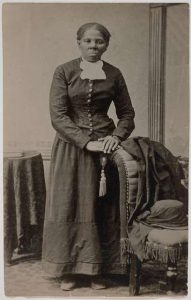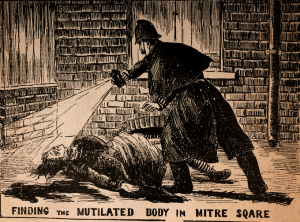Imagine coming home from a long day of work from your main job, only to instantly begin work again on developing an invention that could change the outcome of World War II. Countless hours spent in a room in your home designated specifically for inventing, motivated by the idea of helping the people you left behind in your hometown. You strive in your free time to create something that would not only show your loyalty to the United States but would also help defeat the Nazis. Nothing could stop you, except maybe your reputation and gender. And this was the case for the famous actress Hedy Lamarr, the woman who dedicated her efforts to inventing the concept of spread spectrum. No one thought she would be capable of helping to create a technology that is still used in wireless communications to this day. But Lamarr set out to help those with her same beliefs who were suffering because of this war.1

Hedy Lamarr was undoubtedly beautiful, and was even credited with being the most beautiful woman in the world, but when she wasn’t in front of the flashing lights of fame, she was an amateur scientist.2 Hedy Lamarr was so much more than her beauty. She was intelligent and creative. After years of success in her acting career, she became actively involved in the world of science and technology. Lamarr had a racy past, which included her becoming known as a sex symbol in the film industry, and countless scandals that caused her other amazing talents and inventions to be hidden in the shadow of her limelight. Her growing wealth and Austrian past gave her the motive to contribute help to those who were suffering in Europe. As any successful actress, Hedy Lamarr attended many parties, but little did she know that one of these parties would be crucial in commencing the invention that has changed the world.3
The Japanese attack on Pearl Harbor in December 1941 got Lamarr involved with selling war bonds and volunteering in United Service Organization clubs to help the country as much as possible. Hedy was great at selling war bonds, even selling up to $7 million in one night; but Lamarr knew she could do more.4 This resulted in her beginning to ponder the ideas of her greatest invention. Then, one night as Lamarr attended another one of her Hollywood parties, she met George Antheil, a music composer for Hollywood films. Together, the two would turn Lamarr’s ideas into reality.5 After spending the whole night discussing their admiration for inventing and interest in assisting in the war, the two built the foundations of an invention that would possibly assist the Navy in attacking enemy ships. Lamarr even considered leaving Hollywood to dedicate her full energy to inventing, by joining the National Inventor’s Council, but was dissuaded by Antheil. She then decided to stay in Hollywood, where she could boost public morale through her films and work on her inventions in her free time. Despite Lamarr’s busy schedule, she was able to work with Antheil to begin developing her idea. Antheil’s previous knowledge in having once composed a piece that required sixteen synchronized player pianos assisted in executing Lamarr’s idea.
Lamarr was largely motivated by her Jewish roots. She wanted to bring her mother to the United States, which was nearly impossible at the time. The trip to cross the Atlantic was extremely dangerous, as Nazi submarines were blowing up any ships that carried refugees trying to flee Europe, which only fueled Lamarr’s desire to assist in ending the war. With her extensive knowledge of weapons used in this war, due to her previous relationship with Fritz Mandl, a munitions manufacturer who created weapons and worked closely with Nazis, Lamarr was able to find a problem that needed a solution. The cause that Lamarr sought to fix was the waste warships went through as they shot torpedoes in a general direction before actually hitting the enemy.6

Lamarr’s plan was to invent a radio-controlled missile that contained an anti-jamming device. The idea of a radio-controlled missile was genius for the time, as it would be able to adjust to a moving target. The only issue with this was that the radio frequency controlling the missile could be easily obstructed by the enemy.7 The process that would fix the issue with a regular radio-controlled missile would soon be known as “Frequency Hopping.” This idea of frequency hopping allows a message to be broadcast over a series of radio frequencies and a receiver hopping from frequency to frequency simultaneously is used to pick up the message. Any eavesdroppers would not be able to hear the full message and those attempting to stop the message (also known as jammers) would only be able to knock out a few pieces, allowing the full message to still get through.
Lamarr and Antheil’s invention was genius. If applied correctly, this invention could have cut the time spent at war and possibly saved millions.8 After a collaborative effort, the two sent their description of the system to the National Inventors Council in order to receive a patent. The patent’s design actually used paper rolls similar to piano rolls to synchronize the jumps between the transmitter and the receiver. There are also 88 proposed frequencies matching the number of keys to a piano. There is little doubt that the invention’s design was heavily influenced by Antheil’s involvement in music.9
The patent was granted about one year later and was sent off to Washington to possibly be considered for use in war. However, Lamarr was told that the device was unworkable and that her efforts should remain focused more on entertaining the troops and selling war bonds.10 The efficiency of their invention was overshadowed by the roles the two played in the public. The Navy didn’t believe an actress and a concert pianist could create something of any use to the war. They also considered the mechanism to be too bulky to attach to a torpedo, due to their ignorance when reading the patent and seeing the words “player piano,” which led them to believe that the two wanted to attach a player piano to a missile! This ignorance resulted in the patent collecting dust for twenty years, until three years after its expiration.11

The design was then used for a basic secure military communication. Sadly, this was not until the patent between the two had expired, resulting in neither Lamarr nor Antheil receiving a cent or any credit for their hard work. Between the years of 1945 to 2012, the patent was cited at least sixty-two times, proving it to be far from unworkable, both commercially and militarily. It was not until 1997 that Lamarr and Antheil would receive their official recognition from Electronic Frontier Foundation.12
Hedy Lamarr and George Antheil’s invention was ahead of its time. But it leaves us with the question as to what may have been different if the two had not been dismissed on account of their careers? Maybe if Lamarr had recognized her own worth as well as the worth of her invention, she would have fought for its use in the military rather than passively sitting back and allowing it to collect dust. From the face that inspired Walt Disney’s first princess, Snow White, to the brains behind the scientific concept of spread spectrum, Hedy Lamarr is a remarkable woman. And due to the efforts of Lamarr and Antheil, the concept of “frequency hopping” can now be found at the tips of your fingers, as it serves as the foundational technology in Wi-Fi, Bluetooth, and GPS.13
- Women in World History: A Biographical Encyclopedia, 2002, s.v. “Lamarr, Hedy (1913-2000),” by John Haag. ↵
- Cathaleen Chen, “Hedy Lamarr: Actress by day, tech inventor by night; Heddy Lamarr was honored with a Google Doodle. It turns out, the famous actress was also quite the inventor,” The Christian Science Monitor, November 9, 2015. ↵
- Women in World History: A Biographical Encyclopedia, 2002, s.v. “Lamarr, Hedy (1913-2000),” by John Haag. ↵
- Women in World History: A Biographical Encyclopedia, 2002, s.v. “Lamarr, Hedy (1913-2000),” by John Haag. ↵
- Women in World History: A Biographical Encyclopedia, 2002, s.v. “Lamarr, Hedy (1913-2000),” by John Haag. ↵
- Anna Diamond, “Hollywood’s Secret Weapon: A new documentary, Bombshell: The Hedy Lamarr Story, unearths the movie star’s World War II invention, an ingenious forerunner of high-tech communications. Director Alexandra Dean loops us in,” Smithsonian 26 (2017). ↵
- Sandra Hall, “Inside Hedy Lamarr’s secret life as a wartime inventor,” The Age (Melbourne, Australia), March 1, 2018. ↵
- Interestingly, the technology of “frequency hopping” would only catch on twenty to thirty years after the invention’s creation in 1941. ↵
- Gale Virtual Reference Library, 2007, s.v. “Lamarr Hedy”,227. ↵
- Pamela Hutchinson, “Hedy Lamarr: Stealing Beauty,” Sight & Sound 28, no.4 (2018): 42. ↵
- Fleming Meeks, “I guess they just take and forget about a person,” Forbes 145, no. 10 (1990): 137. ↵
- Pamela Hutchinson, “Hedy Lamarr: Stealing Beauty,” Sight & Sound 28, no.4 (2018): 42. ↵
- Richard Rhodes, “HEDY’S FOLLY: The Life and Breakthrough Inventions of Hedy Lamarr, the Most Beautiful Woman in the World,” Kirkus Reviews 79, no. 19 (2011): 1796-1797. ↵



67 comments
Eric Ortega Rodriguez
This was a very fascinating article. This is the first time that I hear about Hedy Lamarr. The author does an amazing job giving context and stating her accomplishments. What I found fascinating was the invention made by Lamarr and George Antheil which would allow better communication. It was disappointing to read that they did not receive any credit. Overall, this was a very well written and original article. It is bizarre that because Lamarr and Antheil, the concept of “frequency hopping” can now be accessed on our cell phones and is found in technology we use every day such as Wi-Fi, Bluetooth, and GPS.
Sofia Resendiz
Congratulations on your nomination, I had not heard of Lamarr before but from reading this article I learned that she was a well versed talented woman. Although her invention was great it is sad that it was not used or acknowledged until years later. In our society we heavily rely on Bluetooth, Wi-Fi, and the GPS that I wonder how different our technology would be without Lamarr’s invention.
Angel Torres
Hedy and George were both bright innovative individuals that were looking to do more with their talents and help people during the war. It’s unfortunate that their was over looked merely because an actress and a pianist created the invention. To top it off Hedy’s and George’s invention gained popularity after the patent for the invention expire therefore attaining zero credit. The author did a great job of giving information on Hedy’s and George’s background along with contextual information about the time.
Rosa Castillo
Hedy Lamarr is an interesting woman, I have to admit I had never heard of her until I read this article. It is quite intriguing how Hedy managed to be a successful actress and one of the most prominent scientists of her time. I think the author does a beautiful job of highlighting her life and telling her story. You can tell the author put much thought into this article. Great job overall!!
Jose Fernandez
Congratulations on your nomination! I didn’t know about Hedy Lamarr, and this article was very informative and it has many important facts. I can tell a lot of research was done before its writing. It amazes me how a person’s aspects can have such a high impact on their life. I think she did a wonderful job proving people wrong and working against the odds. This is a great article, congratulations.
Aneesa Zubair
Congratulations on being nominated, Maggie! Hedy Lamarr was a beautiful actress, but unfortunately most people only knew her for that, and not for her unique invention. This article brings her contributions to technology and world history to light. Although her hard work was underestimated during her lifetime, it can finally be appreciated today. You also made the concept of frequency hopping (which I had never heard of before) much easier to understand. Great job!
Greyson Addicott
Hedy Lamarr is a very obscure figure within the whole of history. Her gender seemed to both work for and against her, as she was popularized yet hindered as a result of her looks. Her intelligence was likely comparable to the men that consistently passed her, but she persisted nevertheless. The author seemed to know about Lamarr inside and out, and it was refreshing to read an article that was authored with such passion.
Daniela Cardona
I love this article so much. Hedy really had it all, brains and beauty. It is so upsetting that most people do not believe that’s possible and that because she was beautiful she was looked over so many times. It’s unfair to assume you are incapable based off of looks. Especially for girls, one of the most important things to know is that you can have it all if you work hard. I love that Hedy never gave up and fought societal norms. This article shines light on the important issue of judging a book by it’s cover.
Sienna Guerra
First of all, congrats on being nominated for an award this semester. I have never heard of Hedy Lamarr until reading this article. An article about any woman is worth reading and I learned from this article that Lamarr was not only a beautiful actress but trying to be an up and coming individual in the world of technology used for was is truly fascinating.
Luisa Ortiz
Maggie, way to go! woot-woot! congratulation on being nominated for Best Article in the Category of “World History” for this 2018 spring semester your article ” The Brains behind the Beauty: Hedy Lamarr, Actress, and Inventor” is one of my favorites, is both inspiring and empowering! I like articles that showcase women and their attributions to society, thank you for writing this piece. Good luck!